As coaches we debate all the time about how best to coach the players that are influenced by us. But there is never one way to coach that comes out on top. From Marcelo Bielsa through Jurgen Klopp and Pep Guardiola there is a feast of different styles that have influenced the coaches at Cupello.
If you are new to coaching, the idea of creating your own soccer drills can seem like a very scary prospect. Where do you start? What kind of drills should you create? Do they need to be very detailed and specific or can they be simple and generic? And how in the world are you going to come up with so many ideas in the first place?
This article is here to help you answer those questions and more.Coaching soccer is challenging at times, but it’s also incredibly rewarding! Once you get past that initial hurdle of feeling overwhelmed, these tips will help you discover how much fun coaching can be.
In putting together the 12 best soccer drills there are influential factors that should be gone through to create a list of those drills.
Soccer Drills - Coaching Youth Players
Some of the drills that are best for coaching youth players were influenced by Rinus Michels at the Dutch Football Association – what became known as Total Football was based on a series of small sided games. Other influences are the Rondos that began in Spain and have transferred over here with the rise of Pep Guardiola and his way of coaching.
In conjunction with these ideas we need to base what and how we coach on these factors that influence young players:
Playing Positions
On playing positions at a young age, it is all about understanding the game, and the best way to understand what it means to receive and react to a pass in different scenarios is to be put in that situation and learn from experience – mistakes will be made but it is all part of the learning process.
Playing players in different positions is a great way to get them out of their comfort zone – hey coach I don't play left back! Well, you do tonight... Players have to make different decisions in different areas of the pitch.
For instance, if I receive the ball in my opponent's penalty area I can try back heels or feints or stepovers but in my own penalty area, I need to think of quick passes to get out of the danger area or play the ball into touch to buy some time. You can then ask your players the difference and what they do to support the player on the ball in the different areas of the pitch
Technical Drills
You should try to get all your players to play in different positions right up to U12 and even then they may still change their position. Allow players to learn from the drills they play and with your support they can benefit from your help. Formations should be discussed with your players, why you use certain ones, and allow players to have a say in what you are going to do.
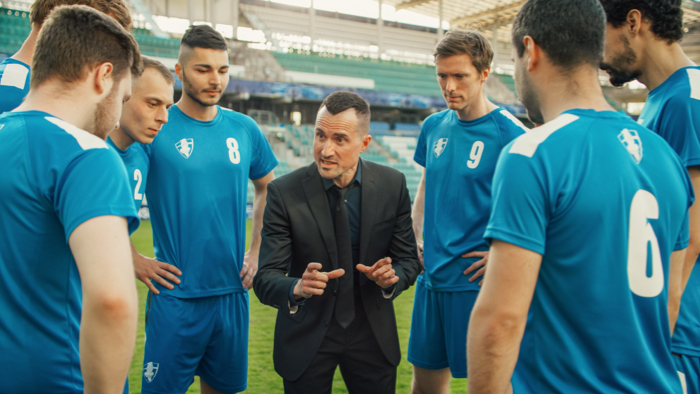
Psychological
Players learn from making mistakes – don't bring them up in front of others. Let players make mistakes while making their own decisions and only talk to them about it if they keep making the same mistake. Help will be needed with set plays like the technique to throw in the ball.
Physical
I always warm up with a ball, but you need generic movements to cover the ABCs (agility, balance, and coordination). I also use handball games and 3v3/4v4 games to warm up. For the younger age groups, you can use tag and chase games – avoid lines of players if possible.
Social
Get the players involved in decision-making processes like who should be the captain or what should we be working on this week. Ownership of the drills they will be playing at training allows them to work out what to do giving them trust and responsibility.
Game Time For Players
It is often a problem for grassroots coaches when they have to provide equal game time for all players when of course the level of players will not always support that. Coaches get questioned all the time about why their son or daughter was made a sub. This is especially so where the club themselves have stated that it is equal opportunities throughout the season for all players.
Sometimes you will have a large squad and will have to leave players out so you should keep a record of who plays when and try to arrange extra friendlies that the less well-developed players can play in. Explain to parents that some games require different types of players and that all players by the end of the season will have played the same number of games.
Coaching Mixed Abilities
Coaches of all levels find this difficult and it is something everyone experiences during their coaching career. As a coach, you pick the drill that you think meets the needs of your players. Think about the players in your group and what they need to help them during matches.
This is known as a player-centered approach. Within that, you need to think about how you challenge all the different levels of players. I will often run the same drill but make it easier by having say a bigger area in one half of the training pitch and a smaller one for the more developed players in the other half.
You can add things like one or two touches for some of the players and make them the Joker/Magic Man who plays for the team in possession. You can solve a lot of problems by working out which individuals work best at the level they are at. If you play the 4v1 Box game for instance you can have 5 of the more developed players working together and 5 of the less developed players together working in the same size area.
You can also pair up players, for instance in 1v1 games that you want to work on defending you can pair up players that you know from their level of play will help each other out. By using individual and small group sessions helps them to work at their pace which in turn helps their learning and will inspire them to come up with ideas during the drill. This is especially good for any players struggling in your soccer sessions.
Observe Your Players First
Before you even think about creating any drills, the very first thing you need to do is to watch your players play. This is the best way to get an idea of what your players’ strengths and weaknesses are. One thing you’ll notice very quickly is that some players are more gifted than others. This can be a challenge when you are trying to come up with drills that challenge every player. As a coach, it’s important to be aware that some soccer players need more help than others. If you notice that a certain player needs more attention, you can make sure to include that player in drills that they need extra help with.
Planning Drill Sessions
When you plan your coaching session and pick drills to use in that session you should think about the individuals in your squad and how each one will cope with the coaching points in the drill. Think about what makes some of your players the best in the squad – are they more physically developed? Are they more technically developed? It could be a simple case that they understand the game and the drill you are using so they can think about how to use their skills in the drill. Question individuals about the challenges in the drill and ask them how it could be made harder for them to have success. Allow them to work out the challenge and find solutions to questions it poses.
Soccer Drill Purpose
A soccer drill’s purpose determines what kind of drill you should be creating. Here are a few examples of different kinds of drills: The most common type of drill you will create as a coach is a warm-up drill. Warm-up drills are used to get the entire team moving and ready for practice. Another common drill you will use as a coach is a shooting drill. Shooting drills are used to help players improve their finishing ability. Defense drills help players improve their skills on defense. Coeducation drills are used to mix up the teams and get players used to playing with players from both sides of the field. Attacking drills are used to help players improve their attacking skills.
Start with a Warm-up Drill
Warm-up drills are used to get players moving and ready for practice. Make sure to start every practice with a warm-up drill so that you can avoid injuries and get your players moving. A warm-up drill should last 2-5 minutes. Here are a few examples of warm-up drills:
- What’s in your pocket? - In this warm-up drill, players start by standing in a circle and placing one foot behind the other. Next, each player takes a ball and places it in the front pocket of their shorts. Players then take turns taking a ball out of their pocket and passing it to the player on their left or right. The goal of this drill is to get the players ready for practice and also get them warmed up.
- Head and shoulders - This is a great way to warm up the entire team. Start by having all the players stand in a circle, facing in. Have a few players start by tapping each other on the head and shoulders. After a few seconds, have the entire team start tapping each other on the head and shoulders. The goal of this drill is to get the players warmed up and ready for practice.
Defense Drills
Soccer is known for its attacking prowess, but the best teams also know how to defend. Defense drills help players improve their defensive skills and make them better prepared for games. Here are a few examples of defense drills:
- One against two - In this drill, two defenders face off against one attacker. The defenders are tasked with defending the goal while the attacker tries to score a goal. The defenders win the drill if they are able to successfully defend their goal while the attacker loses if they are not able to score a goal. This is a great defense drill.
- Two against two - In this drill, two defenders face off against two attackers. The defenders are tasked with defending the goal while the attackers try to score a goal. The defenders win the drill if they are able to successfully defend their goal while both of the attackers lose if they are not able to score a goal. This is another great defense drill. These defense drills are great for getting your players ready for games.
Coeducation Drills
Like defense drills, coeducation drills are used specifically to help players get used to playing with players from both sides of the field. Here are a few examples of coeducation drills:
- Two-ball dribble - In this drill, two teams of two players face off against each other. One team starts by passing the ball to their partner on their side of the field. Once the ball is controlled by the receiving partner, the first team passes the ball to their partner on the other side of the field. The team that is dribbling the ball has to pass the ball to their partner and not to the opposing team. This is a great coeducation drill.
- Tag - In this drill, two teams of two players face off against each other. One team starts by passing the ball to their partner on their side of the field. Once the ball is controlled by the receiving partner, the first team passes the ball to their partner on the other side of the field. This is another great coeducation drill.
Problem-Solving
It is sometimes hard not to give your players clues to your questions when you ask them about the problems they have been facing when they played the session. Pressures of parents watching you coach so you help the players to solve problems when the session looks chaotic – the game is chaotic when they play matches and for them to solve it during a match they need to bring order out of chaos during training.
Reflection
It is always a good thing to reflect on what has happened to the individuals on your team at various points in the season. What is the player's focus, attention, and urgency during training that translates to the pitch? You can also reflect on your coaching actions and verbal/nonverbal communication.
Challenges
Use these challenges when you are playing the drills with your team.
- Can't pass back to the player who gave you the ball
- Play one-twos by lending the ball and getting it back
- Score a goal without using teammates
- Keep the ball for 5 passes before the team can attack
- Score within 3 passes of winning the ball
- Score one touch from close range
- Attack down the middle and create space on the wings
- Win the ball in midfield to counterattack
- Play one and two touches where possible
- Keep hold of the ball after winning it in a tackle
- Dribble or pass
- Pass to feet or pass to space
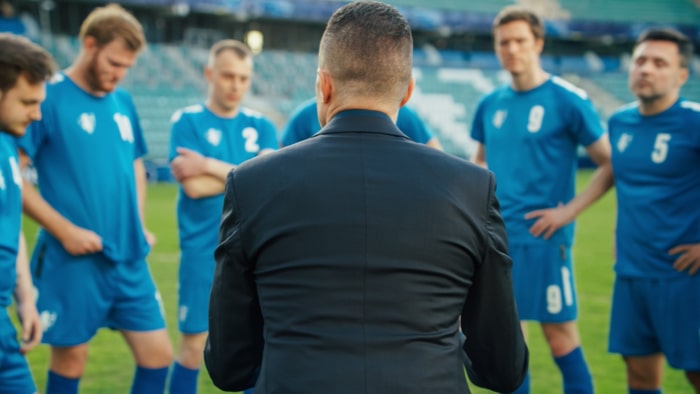
Keeping player focus
The reason coaches use Cupello's best soccer drills is that a coach's priority is to help players become the best they can be as an individual and that the team works together to be the best it can be.
To keep your players concentration and focus the drills need to keep players interested and have a fun element that they enjoy playing. You can keep your players focused by using the drills and changing them to make them different when you have already used them.
Here are some simple ideas to change the drills.
Use small balls to make skills harder
Balls come in all shapes and sizes. You can start practice with a rugby ball for a warm-up, starting with it in their hands then for a bit of fun get them to try and pass the rugby ball using their feet – great fun and almost impossible! Small skills balls with target goals make a great game and will keep players focused.
Different shaped areas for the drill
You don't have to make the area the same shape every time you can make long thin shapes or use circles or grids in a cross where players have to pass and move in different directions.
Time factors are good for adding pressure
You can have games where the players must score in 20 seconds when they win the ball in transition – or break the squad into two groups, each group sends a player into the other group to try and block passes. Keep the total running until one team makes 100 passes (when the ball is won the total stays the same but the players have to get another ball to continue which adds time and pressure). You can vary the number of passes or say that the team with the most passes after 30 seconds wins.


Improve Your GameJust 1.99 p/m
Exclusive drills and sessions, get involved today!
- 100’s of Drills
- Coach to Camera Videos
- Sessions from Pro’s
- Industry Leading Advice
Best Soccer Drills
The majority of the drills here are chosen so they meet one of the criteria:
- Simplifies choice in possession (pass, dribble, shoot)
- No lines or standing around
- Different problems to solve
- More touches of the ball passes made, and goals scored
- Have 1v1s and 2v2s to be won or lost
- Overload situations
- Pressing/passing/movement/possession
1. 5v2+1 Rondo Possession
The Rondo-style soccer drill is a fantastic drill to help players develop their possession skills, passing accuracy, and ball control abilities. This drill involves creating a playing area, usually in a circular or rectangular shape, with cones marking out the boundaries. The aim of the drill is for the possession team to keep the ball away from the defending team by passing the ball quickly and accurately between each other, using overloads to move the ball from one side of the area to the other.
One of the key benefits of this drill is that it helps players learn how to play under pressure. By using overloads, players are forced to think quickly and make accurate passes in tight spaces, replicating game-like situations. The drill also teaches players the importance of communication, movement off the ball, and awareness of their surroundings.
2. 1v1 Breakout
Looking for a dynamic warm-up exercise that can also help build teamwork and ball-control skills? This drill is an excellent choice, providing a fun and challenging way for players to move around the pitch while honing their ability to navigate crowded areas. The drill emphasizes the importance of working together with teammates to maintain possession of the ball, fostering a deeper sense of connection and cohesion within the team. By practicing this drill, players will develop a better understanding of how to read their teammates' movements and communicate effectively on the field.
Furthermore, the drill will help players improve their spatial awareness and ball control skills, allowing them to execute more complex attacking maneuvers and defensive strategies. Ultimately, this exercise is a fantastic way to get players engaged and focused before a match, while also building the foundation for a more effective and cohesive team. With consistent practice, this drill can be a valuable tool for coaches looking to help their team reach new heights of performance and success.
3. The Joker Game
This soccer drill is working with jokers this gives attacking teams an overload to help them create and score goals. Good for getting players to use the width of the pitch and scoring from crosses and combination play.
4. Movement Without the Ball
Support play is key to keeping possession and moving the ball up the pitch – here the clever players move to receive and score in the boxes.
5. Possession in 3v3 Waves
Working in waves is a great way to get players reacting to transitions of the ball with speed to take advantage of defenders being out of position.
6. Build up play: Lone Striker
This soccer drill is playing into one upfront striker giving opportunities to run the game from midfield. In this game through passes, one-twos, and accurate shooting all help teams score more goals.
7. 4v4+2 Positioning Game
Positioning games are fantastic ways to get players to link up using triangles, accurate passes with good weight, and one and two-touch play.
8. Keep Ball in Sixes
This is like a giant Rondo but gives coaches of bigger squads a great way to practice keeping possession using players all around the pitch. Overloads are key to the drill with attackers able to pass and stretch the defenders.
9. 8v3 Possession Game
Looking to inject some speed and intensity into your soccer training sessions? Look no further than this fast-paced drill that demands precision and skill to keep defenders guessing. Players will need to master a range of techniques, from pressing and passing to one and two-touch play, in order to succeed in this high-pressure environment. The drill is designed to challenge players both physically and mentally, requiring quick thinking and split-second decision-making. By practicing this drill regularly, players will develop a deeper understanding of the key principles of the game, as well as the importance of teamwork and communication in fast-moving situations.
Players will improve their technique and ball control, becoming more comfortable with a range of attacking and defensive maneuvers. In essence, this drill is an excellent way for coaches to push their players to new heights, helping them to unlock their full potential and become more effective on the field.
10. Counter Attacking in Transition
Incorporating overload exercises into training sessions can add an extra edge to a team's counterattacking capabilities. By working on these drills, coaches can effectively convey the tactics of counterattacking to their players in an engaging and straightforward way. Through the use of an overload situation, players can learn to exploit the spaces left by their opponents while also developing their decision-making skills under pressure. Not only does this type of exercise improve the speed and efficiency of counterattacks, but it also strengthens the overall teamwork and communication skills of the team.
By practicing these drills regularly, players can become more confident and effective in executing counterattacking strategies, leading to greater success on the field. The use of overload exercises is an invaluable tool for coaches to help their team develop a competitive edge and excel in their performance.
11. 4v1 Boxes
Simple but one of Cupello's favorite drills, this drill not only encourages players to work on their ball control skills but also helps them to evade the opposition by maintaining possession of the ball. Although it may be challenging for the defender, the quick switches of players add an extra layer of complexity to the drill, allowing both the attacking and defensive sides to develop their skills.
By consistently practicing this drill, players can improve their teamwork and communication skills, as well as their ability to read the game and anticipate the movements of their teammates and opponents. Cupello's favorite drill is a fantastic way to help players get in the zone and prepare for competitive play, providing them with a solid foundation of skills and tactics to build upon.
12. 3v2 With Bounce Players
The use of bounce players in goal setup can prove to be an incredibly effective tool for coaches looking to instill the fundamentals of teamwork and positioning in their players. By emphasizing the importance of passing to a teammate and providing support for the pass, coaches can help players develop a better understanding of how to create and exploit spaces on the field.
This type of drill is particularly crucial in the attacking third of the pitch, where a well-executed pass-and-move sequence can quickly turn into a goal-scoring opportunity. Additionally, the use of bounce players can provide a level of unpredictability to the drill, keeping players on their toes and challenging them to adapt their playstyle on the fly. As players become more comfortable with this type of exercise, they will develop a better sense of timing, coordination, and spatial awareness, making them more effective and efficient in the attacking third.
Ultimately, the use of bounce players in goal setup is an essential tool for coaches looking to build a dynamic and cohesive attacking unit capable of breaking down even the toughest defenses.
13. King Of the Ring
Playing this game provides a multitude of opportunities for young players to practice and refine various game-related techniques. By engaging in these repetitive actions, they can strengthen their skills and develop into their best possible selves as athletes. Furthermore, as they continue to play and grow in their abilities, they may also gain a greater understanding of the game's strategies and nuances, allowing them to become even more proficient and successful on the field or court. In essence, this game offers a valuable platform for young players to hone their athletic abilities and achieve their full potential.
Soccer Drills Tips For Parents Coaching
If you have just volunteered to coach your son's or daughter's team there are some simple things you must take into account to make the experience a good one for you and your child.
- Don't forget about their role in the team...
Easy to let them fester so you don't look like you are putting them first when it comes to game time or positions they play. If they are the best goal scorer play them upfront etc - ...but don't favor them!
Don't put your child into all the key roles they should be shared around. If you make them captain they will be under extra scrutiny so build your team using all the players to their best advantage. - Don't forget you're a parent as well
Talk after matches about the game and how well they played. Focus on the game and the roles the players had and why you gave it to them. - Don't discuss other players with them
You may be tempted to complain about the way one of the players behaved at the game but try not to discuss anything with your child that they may talk with friends about. - Keep your emotions in check
Remember that however much you want to rant and rage in the car on the journey home about the penalty that wasn't given your child will not want to hear it – they have probably forgotten that they lost by the time you are driving home!
Using your Substitutes
Player development is the key phrase here – development over results is key to your team playing to the best of its ability by the end of the season.
If you play your strongest team at the expense of continually having the same players sat on the subs bench you will win more games and get praise from the parents of the children that are playing.
However, the parents of the players rightly will not be so happy.
I have a talk with the parents at the beginning of the season and get them to agree that all players will have equal time on the pitch – they all pay the same fee to be at the club so this should be a given.
Also, it benefits the team in the long run with players being away or ill – if you're forced to bring in players who have very little game time it will have an effect on the team. Rather have players who have all played the same amount of game time and this will not be a problem.
You want all players to experience coming off the bench when the game is in full flow. It is a different challenge from starting the game all at the same time. Coming into a game requires mental concentration and the ability to be up to speed the minute they join the game.
At Cupello the coaches have found that some players that looked weak at the beginning of the season are suddenly the first name on your team sheet once half the season has gone. Development has this quirk in helping players to suddenly change into the best they can be.
My subs rules:
- Never start the same players as substitutes each week
- Get all players to start as substitutes
- In the rain, snow, and hot conditions change subs regularly
- Don't put a sub on then bring them off after five minutes, give them 15 or 20 depending on how they are doing.
Tips for Playing teams that Cheat
At all age groups, your team will play against teams that "cheat" and that can be something that makes your team annoyed and gets them into trouble with the referee.
This is how to cope with cheats:
- Create a reputation for fair play - If you play fair you will have more chance of being taken seriously if you complain to the league you play in.
- Stay disciplined - Tell your players to stay calm and not to react when things are happening that is cheating. Play some practice games where you get one team to cheat and see how your players deal with it.
- Respect the referee - Get the referee on your side by not complaining or shouting about decisions that your players think are the wrong ones.
- Don't shout at the cheaters - You should talk to the referee about cheating and not take the law into your own hands.
- Watch out for the parents! - If the opposition is cheating you may find the parents of your team get edgy and start complaining. This can escalate and you don't want that so keep them calm and tell them you will talk to the referee at halftime or at the end of the match.
Cupello Can Help With Your Soccer Drills
Are you looking for support with your drills and your coaching knowledge? Cupello is an incredible resource for coaches of all levels who are looking to accelerate their coaching knowledge and improve their players' performance. With a vast database of drills, sessions, advice, fitness, and specialized content focused on the women's game, Cupello offers a wealth of information and support that can be invaluable to coaches.
Here are some of the key benefits of using Cupello as a coaching resource:
-
Wide range of soccer drills and sessions: Cupello provides coaches with a massive database of drills and sessions that can be used to create structured and effective training sessions. With a variety of different drills focused on different aspects of the game, coaches can create training programs that are tailored to the needs of their players.
-
Focus on women's soccer: Cupello is one of the few platforms that offers a dedicated focus on women's soccer. With content that is specifically designed to help coaches improve the performance of their female players, Cupello can be a valuable resource for coaches who want to ensure that they are providing the best possible training and support to their players.
-
Fitness and conditioning resources: Cupello offers a range of resources focused on fitness and conditioning, including drills and exercises that can help players improve their speed, agility, endurance, and strength. With access to these resources, coaches can help their players to improve their physical fitness and better perform on the field.
-
Expert advice and support: Cupello also provides coaches with access to expert advice and support from experienced coaches and players. Coaches can ask questions, get feedback on their coaching techniques, and receive guidance on how to improve their coaching skills.
-
Time-saving and convenient: With Cupello, coaches can save time and effort by having access to all of the information and resources they need in one place. Instead of spending hours searching for drills and sessions, coaches can quickly and easily find what they need on Cupello and create effective training programs for their players.
Don't waste any more time and take advantage, sign up now and try us on a free trial!
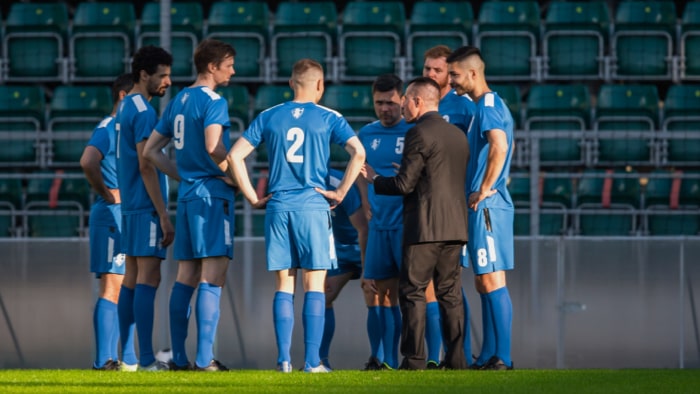
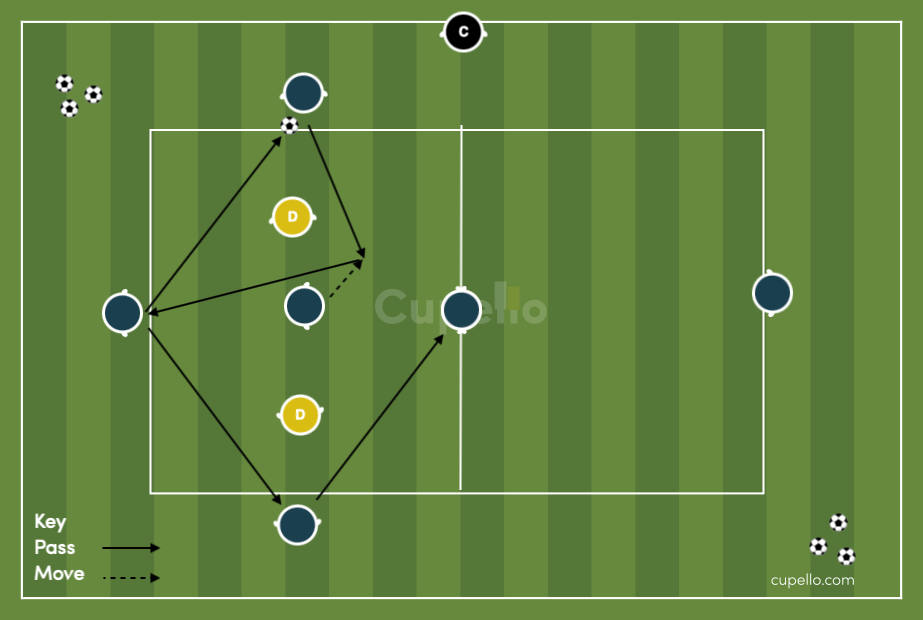
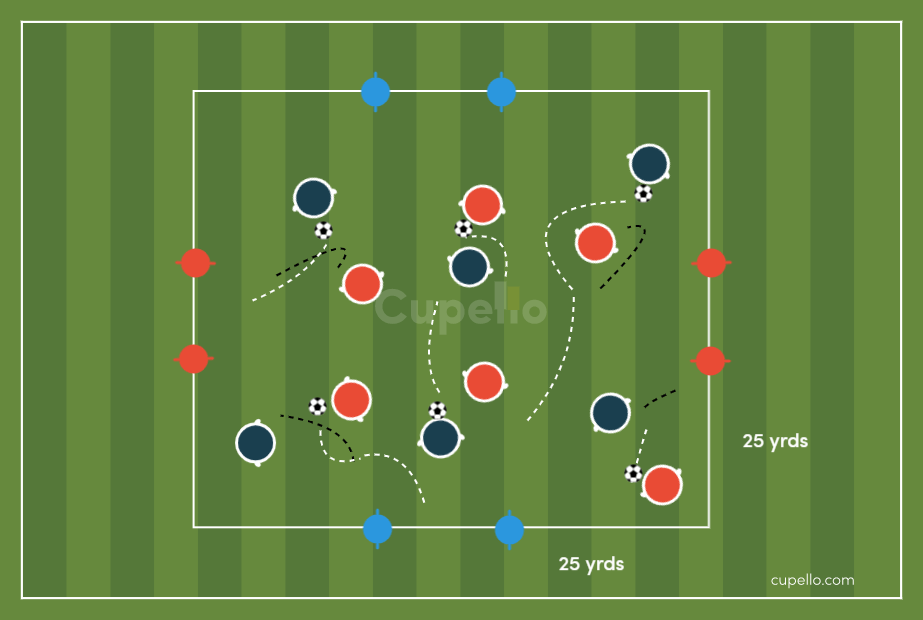
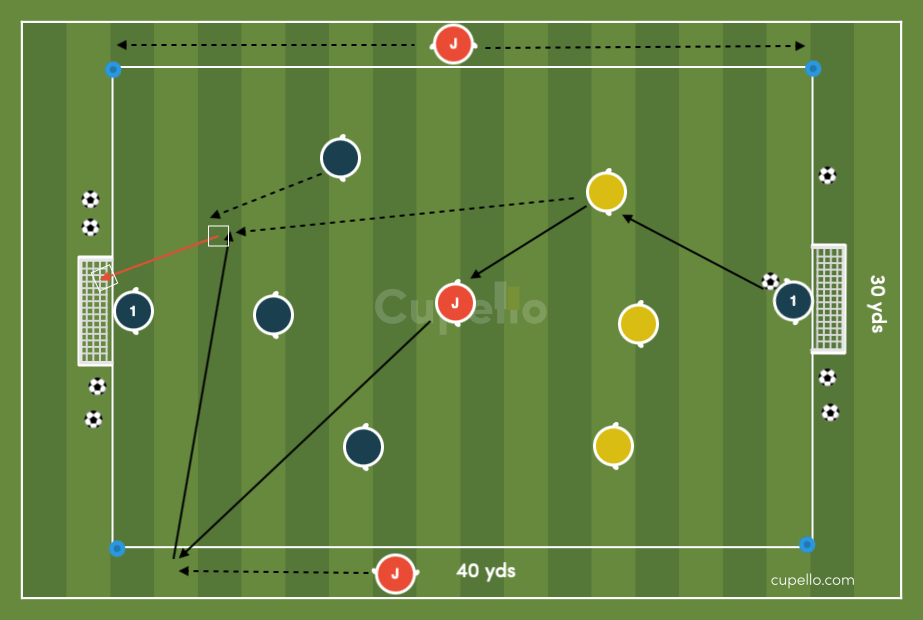
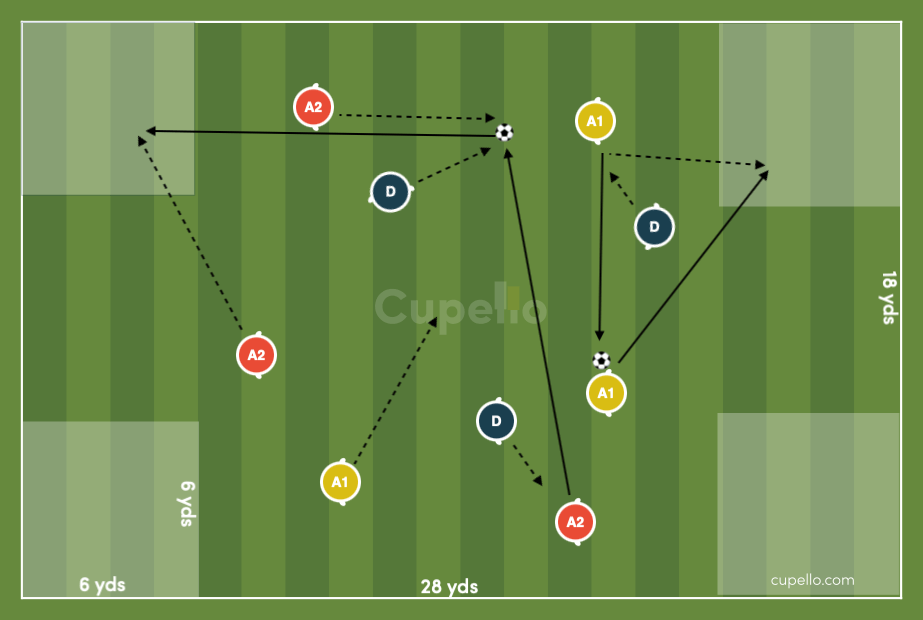
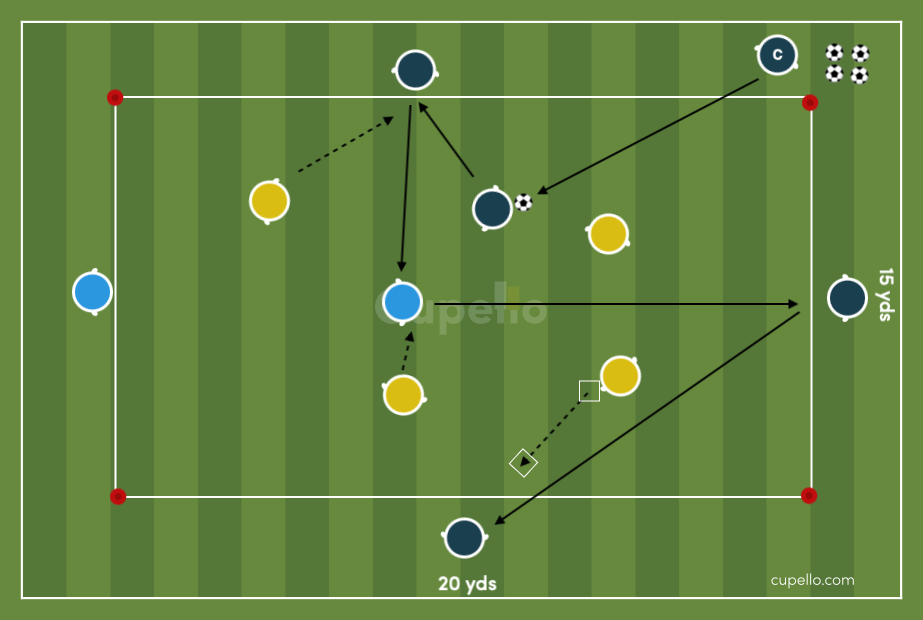
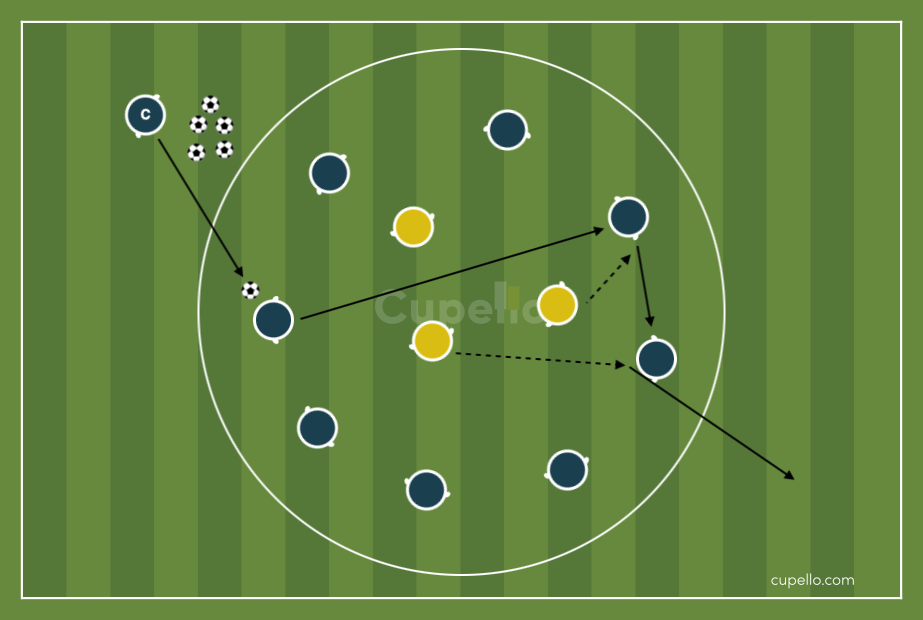
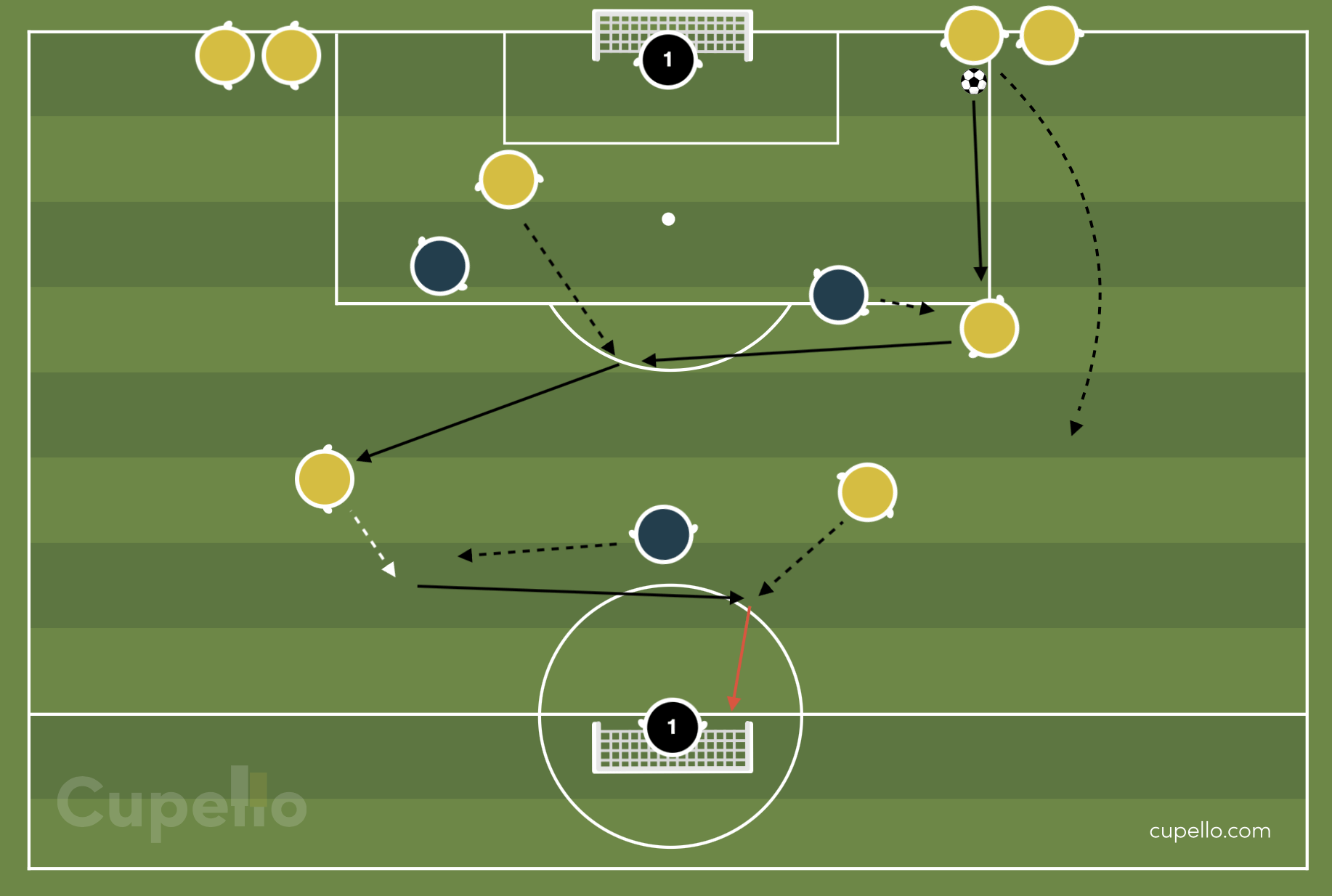
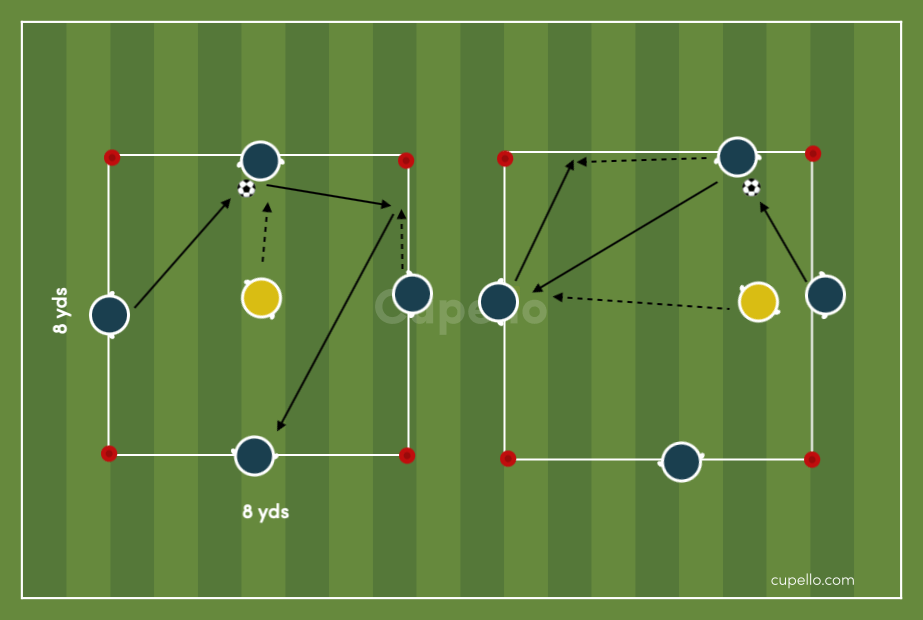
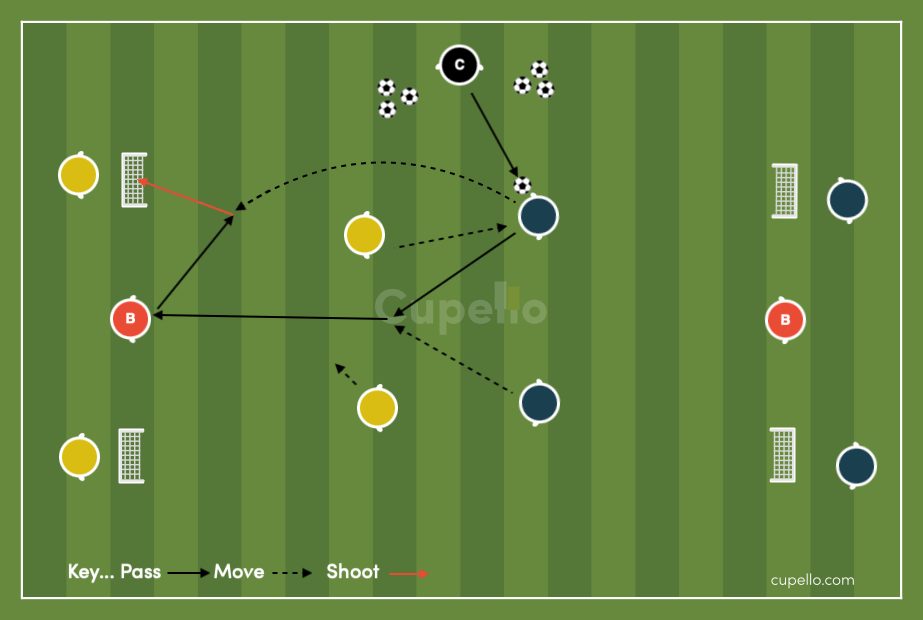
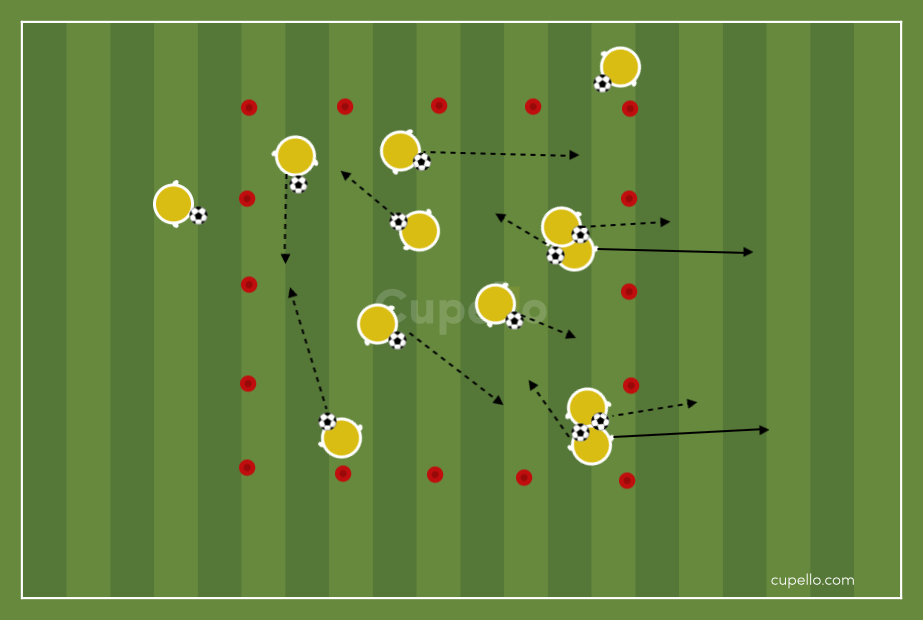
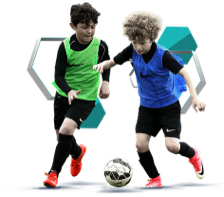
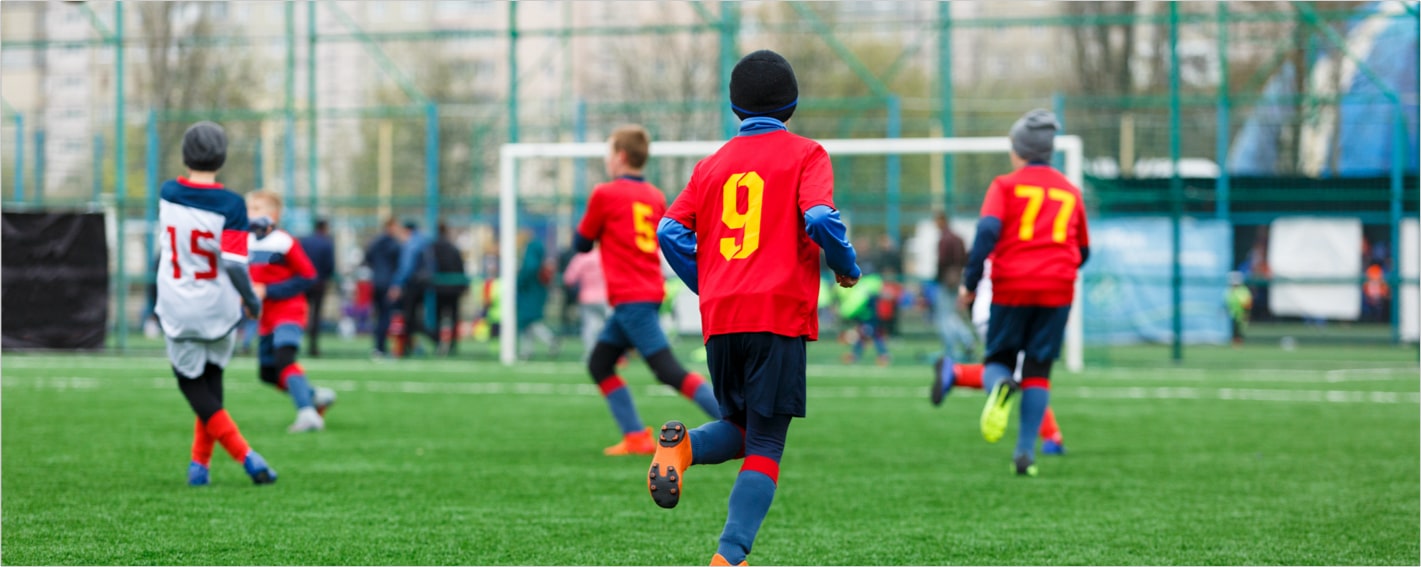
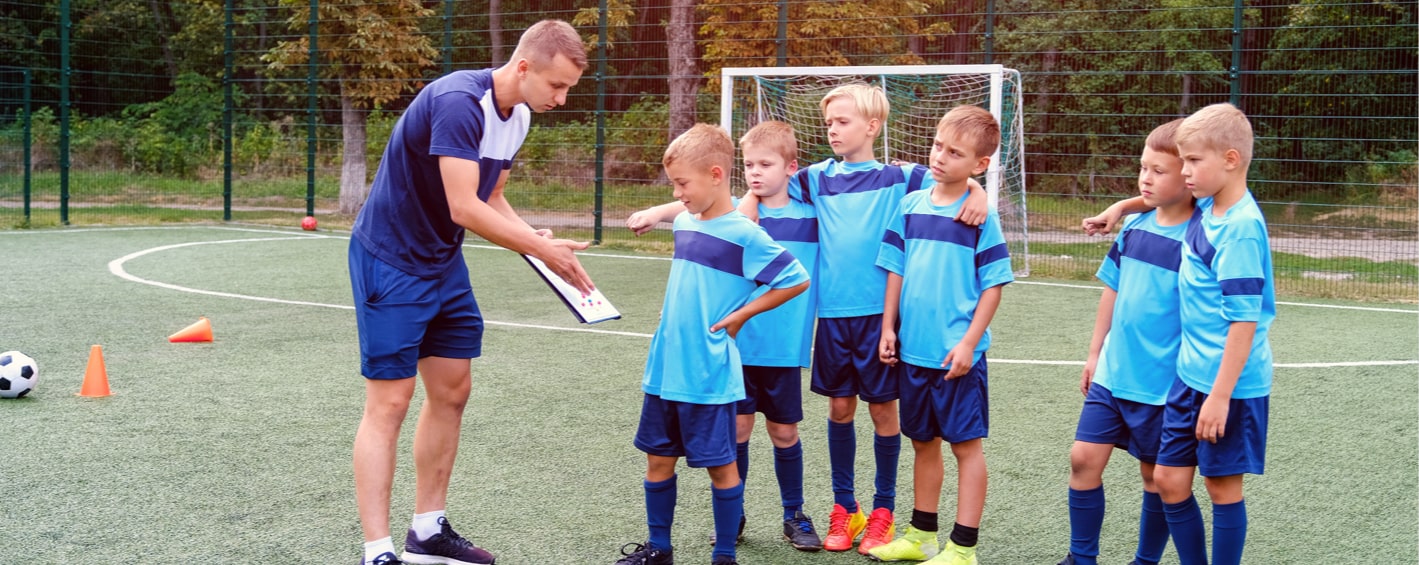
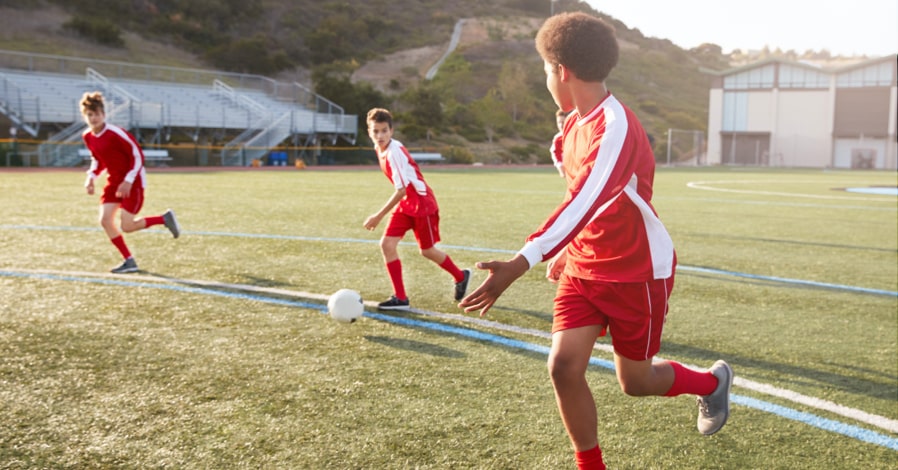
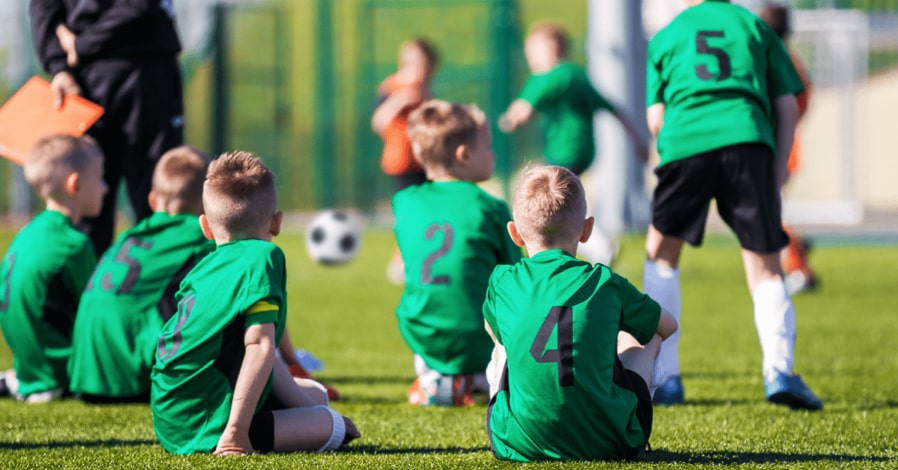
Cupello
Rethinking soccer coaching via our industry leading tools. Built to offer effective coaching development solutions for players and coaches of all levels.